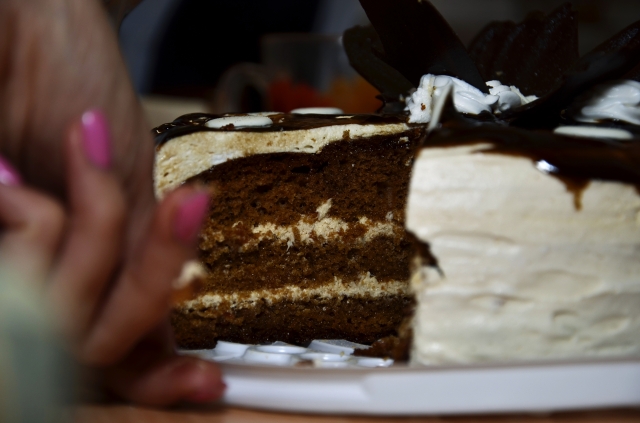Our love of sugar is not caused by a sweet tooth, but by reward centers embedded deep within our brains. When we taste something sweet, receptors on the tongue and the lining of the mouth send instant messages to those centers, triggering the release of feel-good chemicals, including dopamine and endorphins.
These are the same chemicals that people experience when they take first prize in a competition, win at gambling, go on a shopping spree, or engage in sexual activity. Whenever this part of the brain is activated, people feel so good about what they are doing that they are highly motivated to do it again.

Using advanced technology called functional magnetic resonance imaging (fMRI), neuroscientists can now monitor brain activity without invasive procedures. When volunteers eat sweet foods while undergoing a scan, the pleasure centers of their brains become much more active. On the imaging screen, those areas show up in brighter colors. Of all the types of food tested to date, sugar has caused the biggest light show. Even thinking about a favorite dessert can light up the screen.
Interestingly, other scans have shown that our brains can tell the difference between sugar and artificial sweeteners, even when our taste buds are fooled. In one study, healthy volunteers were given fMRI scans while tasting either sugar or the noncaloric sweetener sucralose.
Even though the volunteers had difficulty distinguishing between the tastes of the two compounds, their brains knew the difference. When they tasted sugar, ten areas of their brains lit up in bright colors. When they tasted sucralose, only three regions were activated, leaving the seven other pleasure centers in the dark.
Why are we hardwired to want sweet flavors? As hunter-gatherers, we were so active that we needed to eat food with high concentrations of fat, starch, and sugar in order to survive. This type of food was so scarce in the wilderness environment that we had to search high and low for it. Nature gave us the chemical rewards we needed to stay on task. Even though we are now inundated with rich food, our archaic brains still reward us with dopamine whenever we indulge. Although we’ve succeeded in turning our food supply upside down, we have yet to rewire our sugar-hungry brains.
HOW STARCH AND SUGAR DISRUPT YOUR METABOLISM
When you eat refined sugars and carbohydrates, your digestive system breaks them down into a simple sugar called glucose that is released into your bloodstream. Glucose is essential for your survival. It is the primary source of energy for all of the cells in the body and the only source of energy for your brain.
Your body functions best when you eat low-glycemic foods that release their sugar over a span of a few hours rather than in a short burst. As the glucose trickles into your bloodstream, your pancreas releases measured amounts of the hormone insulin. Insulin attaches to receptors on your fat and muscle cells, which prompts them to open up and receive the sugar and either burn it as fuel or store it for later use. Glucose cannot be cleared from your bloodstream without adequate amounts of insulin; it’s a tightly choreographed dance.
High-glycemic foods have large amounts of rapidly digested carbohydrates and sugars. If you eat a high-glycemic meal, you experience a sudden surge in blood sugar, which must be countered by an equal surge in insulin. If all goes well, the extra infusion of insulin will drive the sugar out of your blood, restoring normal levels.
If you make a habit of eating high-glycemic food—as most Americans do—your fat and muscle cells are likely to stop reacting to the insulin. In medical terms, they will become insulin resistant. Because of this abnormal response, high levels of glucose linger in your bloodstream, resulting in chronic high blood sugar.
At some point, your pancreas may no longer be able to keep up with the incessant demand for insulin. As a result, even more glucose accumulates in your blood. If your fasting blood sugar climbs above 126 mg/dL (milligrams per deciliter) for two consecutive blood tests, you meet the criteria for type 2 diabetes. Our highly refined, starchy, high-sugar Western diet is pushing tens of millions of adults and teenagers into this deadly zone.
Our native diet was low-glycemic. When we choose to eat more low-glycemic meals, we are giving our bodies the types of food they are designed to handle. As a result, we have a lower risk of obesity and diabetes and their many negative consequences.
Featured images:
Image source: SmartPhotoStock
My name is Dennis, and I am a professional Nutritionist.

